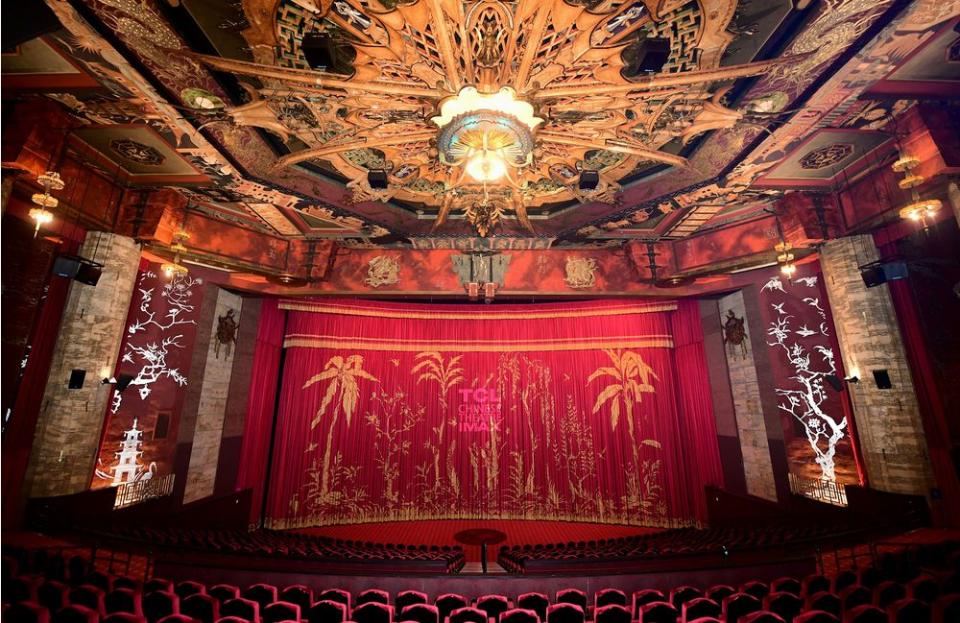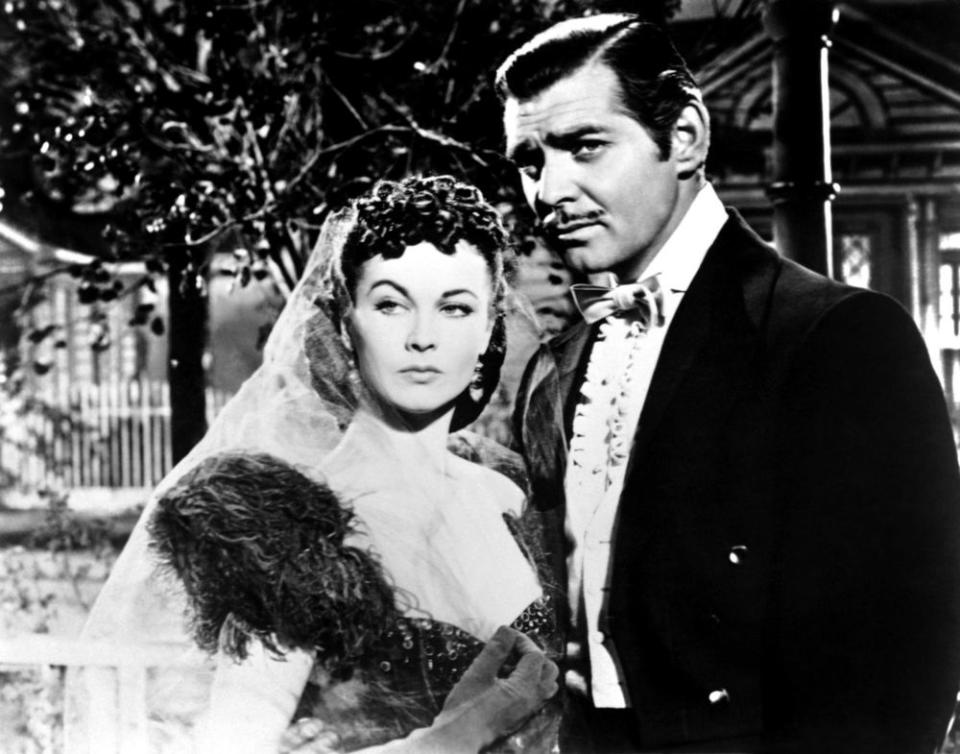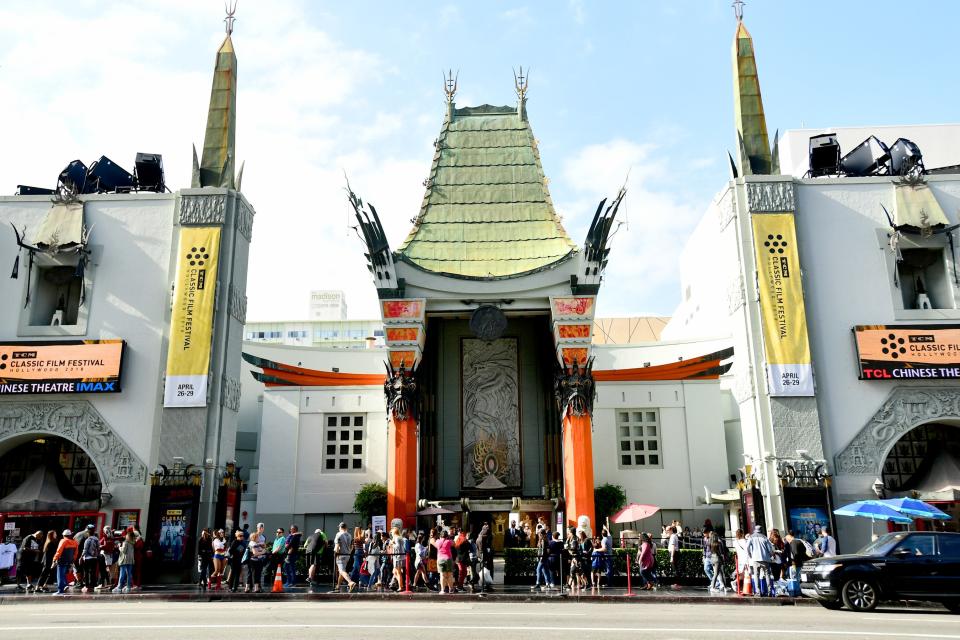How the TCM festival brings Old Hollywood to life for four days – and makes it more inclusive
Since it launched as a network 25 years ago this week, Turner Classic Movies has been dedicated to carrying the torch for classic cinema. When they launched their now annual film festival ten years ago, they sought to double down on that in an even more experiential way – by literally bringing a semblance of Old Hollywood to life in the spaces it once existed for four days every spring.
With the TCM Classic Film Festival, Turner Classic Movies not only contributes to the celebration and preservation of the films themselves, but takes things a step further and preserves the history of the film-going experience. “We’re having an opportunity to revisit these theaters where these movies originally screened, and you feel it in the houses,” notes TCM’s SVP of Talent, Marketing, Brand Creative and Production, Pola Changnon. “You get a sense of the history and there’s something that is a little tingly about it.”
For most of the year, Hollywood Boulevard is a wasteland of the American Dream – a space overrun by tourists, a giant shopping mall, chain stores, and second-rate Spidermans. But, it’s also home to art deco movie palaces, the iconic Roosevelt hotel, and Hollywood’s two great stone monuments to those it mythologizes – the hand and footprints in front of the Chinese Theater and the Walk of Fame — monuments that come back to life in unexpected ways amidst the hubbub of the festival.
Film writer Marya E. Gates, who has launched social media screening initiatives like Noirvember and 52 Films By Women, says she’s always struck by the sense of “living history” on Hollywood Boulevard during the festival. Classic movie lover Oriana Nudo points to the very practice of waiting in line to get into screenings as a return to the days of the Golden Age of Hollywood – an aspect of the festival that bestows these classics with a sense of their value. “When you look back at photos, like of On the Town opening at Radio City Music Hall, there’s a three-block line of people waiting to get into the theater,” she says. “When people used to do things like that – not at a midnight showing and not because it’s Harry Potter – but when people just used to get really excited like ‘Gene Kelly’s new movie is out, I have to go see it’ and you wait in line, and that’s what that reminds me of.”

For others, the festival brings Old Hollywood back to life in quite literal ways – through the special screenings, discussions, and introductions from guests that provide insight into the stars and filmmakers of the past. Diana Bosch, who runs classic movie blog Flickin’ Out, is a massive William Holden fan. She emotionally recounts getting to hear his co-star Nancy Olson reminisce about working with him: “For that moment, it brought him back to life, and I never thought I’d be able to hear from someone who knew him. It’s really profound.”
But in resurrecting classic Hollywood, via both the network and more vividly at the festival, TCM faces unique challenges — the Golden Age of Hollywood by its nature was not an inclusive space. The studio system was dominated by white men perpetuating a worldview that often foregrounded racism, sexism, and homophobia. Movies have been and always will be a product of their time. How then, can TCM, both pay tribute to the glamour of Hollywood’s past and make the festival (and the network by extension) a more diverse and inclusive venture?
Both Changnon and TCM host Ben Mankiewicz acknowledge how crucial nostalgia is to the entire experience TCM offers, but stress how the network strives to make sure it’s not divorced from contemporary conversations. “I always talk about there’s a vigor in our nostalgia, so we don’t want it to just be stepping into a deserted attic,” Changnon says of designing physical spaces for the festival. “We want it to feel very much alive and connected and influencing what happens in the world today.”
Mankiewicz points to the network’s continual efforts to contextualize films through on-air introductions and curated programming themes. “You can celebrate who we are while pointing out the moments where we have fallen short, sometimes tremendously,” he says. “We romanticize old Hollywood. That’s our job to romanticize Old Hollywood. It had a lot of problems, but it was also great, and there was a grandness to it. It was big. It was epic in the original meaning of the word. As a television channel, we offer much more than nostalgia.”

TCM’s fans warmly celebrate this commitment to context and inclusivity. ”TCM is a leader when it comes to classic movies. Not just showing them, but also having these tough conversations and preserving them because they are important to our history,” says Bosch of the network at large. “[Films] tell a story of our own history, and I don’t think America has reconciled with a lot of the issues that our country has. Entertainment provides a window to those difficult times in terms of segregation, in terms of violence against women, and all these conversations are ones that need to happen.”
Film journalist and TCM fan Monica Castillo echoes this, saying, “They do a really great job of contextualizing things in case it’s problematic. There’s something to be learned in revisiting our past, whether it’s something good or something bad. It’s a nostalgia, but it’s smart about it.” Fans point to guests like film historians Donald Bogle and Cari Beauchamp who provide unique perspectives on topics like race and gender, lending even greater depth to the film-viewing experience.
Wade Sheeler, co-founder of classic film blog The Retro Set, calls attention to how TCM often programs films that speak to our contemporary moment and include a discussion of that resonance in their presentation of them. “The network, which is all about the past, really deals a lot more with the present than a lot of the networks do,” he remarks, pointing to his own experiences working in reality television. “The pitfalls that are evident from having a nostalgic viewpoint of the past, a rose-colored glasses, rearview mirror look at things – TCM has not shied away from [exposing that], but underlined and emphasized it by the way they curate their programming.”
Many point to the festival as an even more inclusive space than the network itself. Bosch says she actively feels more diversity at the festival, citing the wider range of hosts and the make-up of the crowd. “You can actually see a more diverse group of people than the network shows you,” she says. Indeed, TCM’s entire crop of on-air hosts, which include Mankiewicz, Alicia Malone, Dave Karger, and Eddie Muller, are all white — but given that every film (79 in total this year) receives an in-depth introduction, the festival offers up a much wider array of voices.
Furthermore, the festival includes panels and discussions that actively engage with those questions, like this year’s planned panel, “The Complicated Legacy of Gone with the Wind,” delving into the complicated history of the film’s legacy in its lost cause rhetoric and depictions of slavery. Every single person interviewed for this article pointed to that panel as the type of crucial work TCM is doing beyond static nostalgic reverence.

“They do a good job at really parsing what is good about looking back and having that nostalgic feeling, but also not to say, ‘This was a better time,’” Gates adds. “They’re being a little more inclusive in what they count as a classic and that’s the best way to look at film history.” She points to films on the festival schedule that are 1980s queer classics, like this year’s screening of Desert Hearts and last year’s showing of Maurice, as examples of how the festival broadens its reach to give marginalized voices a seat at the “classic” table.
More than anything, it’s the sense of community among TCM’s fans that more deeply furthers this inclusivity. There’s the movies and the special guests, but where else can you wait in line with people who are willing to obsess with you about Cary Grant or Katharine Hepburn? TCM has fostered a sense of camaraderie that is on full display in the hallowed halls of the places that created the films and legends these fans worship.
Castillo keeps coming back to the word “welcoming” when discussing the festival, and Bosch points to initiatives like the TCM Backlot fan club that provide even more opportunities for fans to engage throughout the year. The ever-expanding festival (it’s gone from 74 events in its first year to 129 in its tenth) is the hub for this – a place for fans to come together and enjoy a taste of Hollywood in its former glory, while connecting with people and themes that might never have had space in the white-washed, male-dominated world of Hollywood’s Golden Age.
“The festival is a reminder of what this channel means to people,” says Mankiewicz. “[People] come for the shared festival experience with other festival guests – for the sudden feeling that you’re not the person at the office who likes black-and-white movies. You’re surrounded by thousands of other people who like black-and-white movies. You’re not weird; you’re not different. There is a grand moment of community, of coming together, and sharing an experience together.”
And that’s something that keeps fans coming back year after year, telling TCM, in the most classic of ways, here’s looking at you, kid…
The 10th annual TCM Classic Film Festival runs April 11-14 in Hollywood.
Related content:


